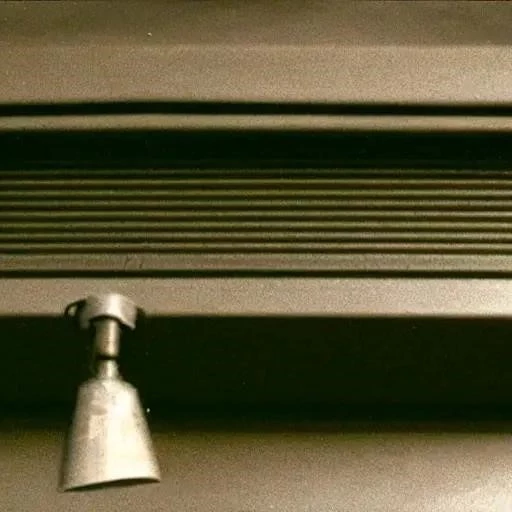
In an automotive landscape increasingly dominated by forced induction and electrification, the humble naturally aspirated (NA) engine often feels like a relic of a bygone era; Whispers abound in enthusiast circles: “Why bother tuning an NA car when a turbo upgrade yields far more power?” Yet, for a dedicated cohort of drivers, the pursuit of perfection within the confines of an engine breathing solely on its own terms remains a profoundly rewarding endeavor. This isn’t merely about chasing peak horsepower; it’s about crafting a symphony of mechanical harmony, a visceral connection between driver and machine that forced induction often struggles to replicate. The question isn’t whether it’s possible to extract more power, but rather, is the refined, linear, and incredibly responsive driving experience truly worth the investment?
The answer, for those who truly appreciate the nuanced art of driving, is an emphatic “yes.” Tuning a natural aspiration car isn’t about brute force; it’s about meticulous optimization. It involves a delicate dance between airflow, fuel delivery, ignition timing, and mechanical adjustments, all orchestrated to unlock the engine’s inherent potential. While the headline-grabbing horsepower figures might not match a turbocharged counterpart, the improvements in throttle response, the broadened power band, and the intoxicating engine note often create a driving sensation that far exceeds the sum of its statistical parts. By integrating insights from advanced diagnostic tools and decades of tuning expertise, specialists are transforming these engines, elevating them from merely competent to truly captivating performers, delivering an unparalleled sense of engagement on every single journey.
| Aspect | Description |
|---|---|
| What is NA Tuning? | Optimizing naturally aspirated engine performance through ECU remapping, intake/exhaust upgrades, camshafts, lighter components, and throttle body enhancements. |
| Primary Goal | Enhance throttle response, broaden power band, improve engine sound, increase efficiency, and refine the overall driving experience, rather than just raw peak horsepower. |
| Key Benefits | Superior throttle linearity, predictable power delivery, enhanced engine note, improved reliability (compared to forced induction additions), heightened driver engagement. |
| Common Modifications | Performance air intake, free-flowing exhaust system, ECU software optimization (remapping/flash tune), lighter flywheel, performance camshafts, larger throttle bodies, porting/polishing. |
| Typical Cost Range | From a few hundred dollars for a basic ECU flash to several thousand for comprehensive engine builds (e.g., cams, head work, ITBs). |
| Ideal Candidates | Engines with high factory performance potential (e.g., Honda K-series, Mazda MX-5, BMW M-series, Subaru BRZ/Toyota GT86), or those where a linear, engaging power delivery is prioritized over sheer peak power. |
| Reference Link | MotorTrend: NA Engine Tuning Guide |
Consider the engineering philosophy behind a finely tuned naturally aspirated engine. Unlike forced induction, which fundamentally alters how an engine breathes by compressing air, NA tuning meticulously refines the existing process. It’s akin to a master chef enhancing the natural flavors of ingredients through precise cooking techniques, rather than simply dousing them in a potent sauce. Expert tuners, utilizing sophisticated dyno testing and real-world driving data, work to optimize every millisecond of the combustion cycle. This includes adjusting fuel maps for peak efficiency and power, advancing or retarding ignition timing for optimal spark, and fine-tuning valve lift and duration through camshaft upgrades. The cumulative effect is an engine that feels more alive, more responsive, and utterly connected to the driver’s inputs, offering an incredibly satisfying surge of power that builds linearly to the redline.
Industry examples abound, showcasing the enduring appeal and effectiveness of NA tuning. The Honda K-series engines, renowned for their VTEC technology and high-revving nature, become truly exceptional with a well-executed tune, often yielding significant gains in mid-range torque and top-end horsepower, transforming an already spirited car into a track-day hero. Similarly, the Mazda MX-5, a perennial favorite for its balanced chassis and engaging drive, sees its character profoundly enhanced through ECU optimization and intake/exhaust modifications. “It’s not about making a slow car fast; it’s about making a great car magnificent,” observes Mark Dobbins, a veteran performance shop owner with decades of experience refining NA platforms. This philosophy underscores the value proposition: investing in the intrinsic qualities of the vehicle rather than just bolting on more power.
Beyond the raw performance, tuning a natural aspiration car often brings a tangible increase in reliability when compared to the stresses imposed by significant forced induction additions. Since the engine isn’t being subjected to extreme pressures, the likelihood of component failure is considerably lower, meaning your investment translates into more exhilarating miles and fewer costly repairs. Crucially, this approach fosters a deeper appreciation for automotive engineering, empowering drivers to understand and optimize the intricate mechanics governing their vehicle’s performance. It’s a journey of discovery, refining the inherent capabilities of an engine rather than fundamentally altering its design principles.
Looking ahead, as the automotive world pivots towards electrification, the appeal of a perfectly tuned naturally aspirated engine might even grow. For purists and enthusiasts, these cars represent a dwindling breed, offering a mechanical purity that electric vehicles, despite their astonishing performance, simply cannot replicate. The evocative roar of an optimized engine, the precise feedback through the accelerator pedal, and the seamless, linear delivery of power will become cherished attributes. Investing in a quality NA tune today is not just about enhancing a car; it’s about preserving a unique driving art form, ensuring that the visceral thrill of a perfectly balanced, naturally breathing machine continues to captivate generations of drivers who value engagement above all else. So, is it worth it? Absolutely, for those who truly understand what it means to drive.
